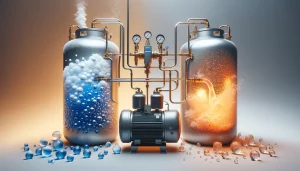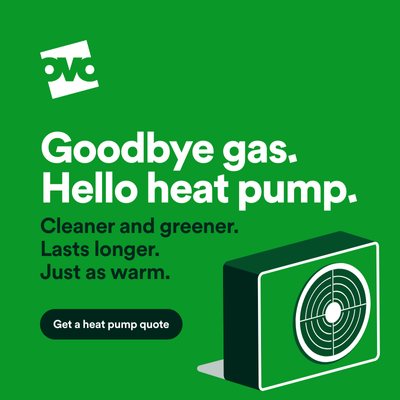How Do Refrigerants Actually Work?
Water boils at 100°C, as everyone knows. Inside the water, there are numerous molecules moving rapidly, similar to ping pong balls in motion. The hotter the water, the faster they move. At the water's surface, air molecules act like a lid, preventing the excited water molecules from escaping. Any overly excited water molecules attempting to escape are forcefully pushed back down by the air molecules, reminiscent of the game whack-a-mole.
As the water heats up, the molecules move faster, constrained by the air above. However, if the water is heated sufficiently, the water molecules will move so quickly that they overpower the air molecules and escape. This point of escape is known as the boiling point, typically 100°C.
At higher altitudes, like the summit of Mount Everest, there is less air, meaning fewer air molecules to contain the water molecules. This makes it easier for the water molecules to escape. While I haven't been there, it's said that at Everest's summit, water boils at 80°C due to the lower pressure, which decreases the containment by air.
To recap, the boiling temperature of water depends on the air pressure above it. We could theoretically adjust the boiling point of water to our liking by altering this pressure. This principle is precisely what we utilize in refrigeration: manipulating pressure to change the boiling point.
Step 2: Instead of water, which is inefficient as a refrigerant, we use propane, or R290. Opening a can of propane causes it to boil vigorously. The propane molecules move so fast that they easily escape the air molecules above, and each escaping molecule carries away a bit of heat, cooling the propane container to -42°C.
However, releasing the propane into the atmosphere is inefficient, so we capture it. We then use a pump to compress it to 300psi and store it in a new container. At this pressure, the propane condenses back into liquid, releasing heat as it transitions from gas to liquid. This process of compression essentially squeezes the heat out of the propane, allowing it to condense at 45°C.
So, in one container, we have propane boiling at -40°C, absorbing heat. In another, we have propane condensing at 45°C, releasing heat, with a compressor between them. We're essentially moving heat from one place to another using a compressor.
Refrigeration engineers now cleverly adjust these pressures to achieve precise temperatures, but it all boils down to pressure manipulation. In your fridge, freezer, or heat pump, this is exactly what's happening. It's not complex or new. It's a beautiful example of science in action.
Heat pump builder
- 26 Forums
- 2,360 Topics
- 53.5 K Posts
- 303 Online
- 6,026 Members
Join Us!
Worth Watching
Latest Posts
-

RE: My Powerwall 3 Consumes 3-4 kWh/Day in Self-Consumption: Is This Normal?
@caron, I'm looking into this for you... from my own pe...
By Mars , 47 seconds ago
-
RE: Mitsubishi Ecodan R290 10kW performance
@majordennisbloodnok Delat T 3C, no defrosting and I am...
By Ecoste , 36 minutes ago
-
RE: New Fogstar 15.5kWh upright solution
SITREP #5 (I think) Milestone completed toda...
By GGW , 2 hours ago
-
RE: Octopus Cosy Heat Pump Owners & Discussion Thread
The FT levels off at either the set point OR the minimu...
By AndrewJ , 2 hours ago
-
RE: MyVaillant Connect Regular Disconnect
Thanks. Yes, if the time is consistently 11pm every nig...
By buckwem , 2 hours ago
-

RE: Speedcomfort radiator fans
My take on Speedcomfort radiator fans: If anyone w...
By Mars , 8 hours ago
-
RE: Midea ASHP – how to set weather compensation
@pash44pump I have yet to come across any Clivet or Mid...
By benson , 8 hours ago
-
RE: Who's your electricity provider and what's your tariff?
@transparent Thanks, this helps. Could it be that St...
By Batpred , 9 hours ago
-
RE: Clivet ASHPs and weather compensation
Simon did share a lot of very helpful advice. On furthe...
By ambris , 9 hours ago
-
RE: Home Assistant vs ESPAltherma.
@majordennisbloodnok Thanks very much.
By Ubert767 , 10 hours ago
-

RE: Setback savings - fact or fiction?
I could, but I think we can do better, by plotting hour...
By cathodeRay , 1 day ago
-
RE: Advice on internal circulation pump noise
Extend the primary branch and make sure you have more t...
By ASHP-BOBBA , 1 day ago
-

RE: External pipework insulation
Oh Dear! that's appalling pipe work, should've been in ...
By dgclimatecontrol , 1 day ago
-

RE: Jokes and fun posts about heat pumps and renewables
By Morgan , 1 day ago
-

RE: Controlling Daikin Altherma via P1P2 and Home Assistant
On the contrary, @toodles, that’s a lot of help. I’d ne...
By Majordennisbloodnok , 2 days ago
-

Parsnip, Bacon & Coconut Milk Soup
First let me say, I am only a cook because I am human a...
By Toodles , 2 days ago
-
RE: Electricity price predictions
Ben Watts posted on LinkedIn that he had updated this w...
By Judith , 2 days ago
-

RE: The good, the bad and the not that great – my heat pump installation
Small update, Emailed and Spoke to Midea UK and they ...
By Burtis , 2 days ago





